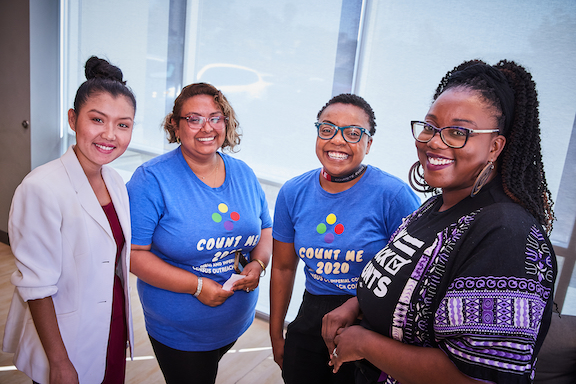The U.S. Census begins in San Diego County on March 12 and on March 6, the Count Me 2020 Coalition and Engage San Diego held a “train the trainer” session to teach staff and volunteers proper procedures and rules to help the 2020 Census do the “hard to count” communities of San Diego and Imperial counties at the Jackie Robinson Family YMCA.
Count Me 2020 Coalition is a group of state partners, governments, and community organizations working to motivate and activate underserved communities of African American, Latino, Asian, Pacific Islander, immigrant, refugee, veteran, LGBTQ, senior, and individuals and families displaced from homes.
With a proper county, the state of California could bring in $115 billion through 55 federal spending programs. The Census provides vital information about the regions growing population and infrastructure, which impacts the everyday lives of everyone living in the U.S. Proper collection allocates funds for community support programs, new schools and hospitals, roads, firehouses and has the ability to cut new districts. This is also important information for businesses in decisions of where to open new locations, creating and supporting more jobs in the region.

Count Me 2020 staff and volunteers prepare for training at the Jackie Robinson Family YMCA.
Getting a full and accurate count in San Diego and Imperial Counties (Region 10) is vital for our vibrant, growing region – not only for us, but for future generations to come, said Ray Major, SANDAG chief Data and Analytics officer.
“If everyone in our region is counted, it could help bring more money to our region for transportation, housing, and community programs,” said Major. “In addition, census data helps SANDAG analyze commute patterns and plan for improvements to our region’s transportation network.”
California is investing $187.2 million to outreach and educate the hardest-to-count populations on the 2020 Census, funding the efforts of municipalities, nonprofits, and community-based organizations to ensure California’s communities have fair representation and funding as a result of 2020 Census participation. Results of the 2010 Census showed that San Diego County is the 21st hardest county to count and Imperial County was designated as the most undercounted region in the entire state. Data from the Advancement Project said the uncounted number could be higher in 2020 with as many as 783,277 people at risk of not being counted.
The region was awarded more than $4.4 million by the State of California to fund their efforts to
increase Census participation in the 230 Census tracts most at risk of undercount. An additional $400,000 was provided through San Diego Grantmakers.
“Nonprofits and community members, funders, and government agencies have been talking about how to make sure that we reach our hardest-to-count neighbors for nearly the past two years,” said Megan Thomas, vice president of collaborations and initiatives, at San Diego Grantmakers. “For this once-in-a-decade opportunity to promote fair representation and secure the funds we need to support a thriving San Diego and Imperial region, we are doing our best work, together.”
How to Take the 2020 Census in San Diego and Imperial Counties
• Online: Complete the questionnaire at the official website, my2020census.gov on your desktop computer or mobile device, or through Questionnaire Assistance Centers and Kiosks hosted by libraries, governments, and community groups at various locations around the region. A full list of locations will be posted to countme2020.org in the next few weeks. The online self-response form is provided in 12 languages plus English, and 59 other language assistance guides are provided online, including in Braille and large print.
• Phone: Response can be made by phone. Depending on the language preferred (12 languages plus English), there is a toll-free number a resident can call. Call the Census Bureau Customer Service Center at (800) 923-8282.
• Paper Questionnaire Form: If requested, a paper form can be provided in Spanish and English, as part of the update/leave campaign and for those who do not receive mail at their physical address.
• In-Person: In-person home visits by official Census enumerators will begin in April 2020 to visit college students who live on campus, people living in senior centers, and others who live among large groups of people. In May 2020, Census enumerators will begin visiting homes that haven’t responded to the 2020 Census by April 30, 2020, to help make sure everyone is counted.
For more information and locations visit. www.countme2020.org.














